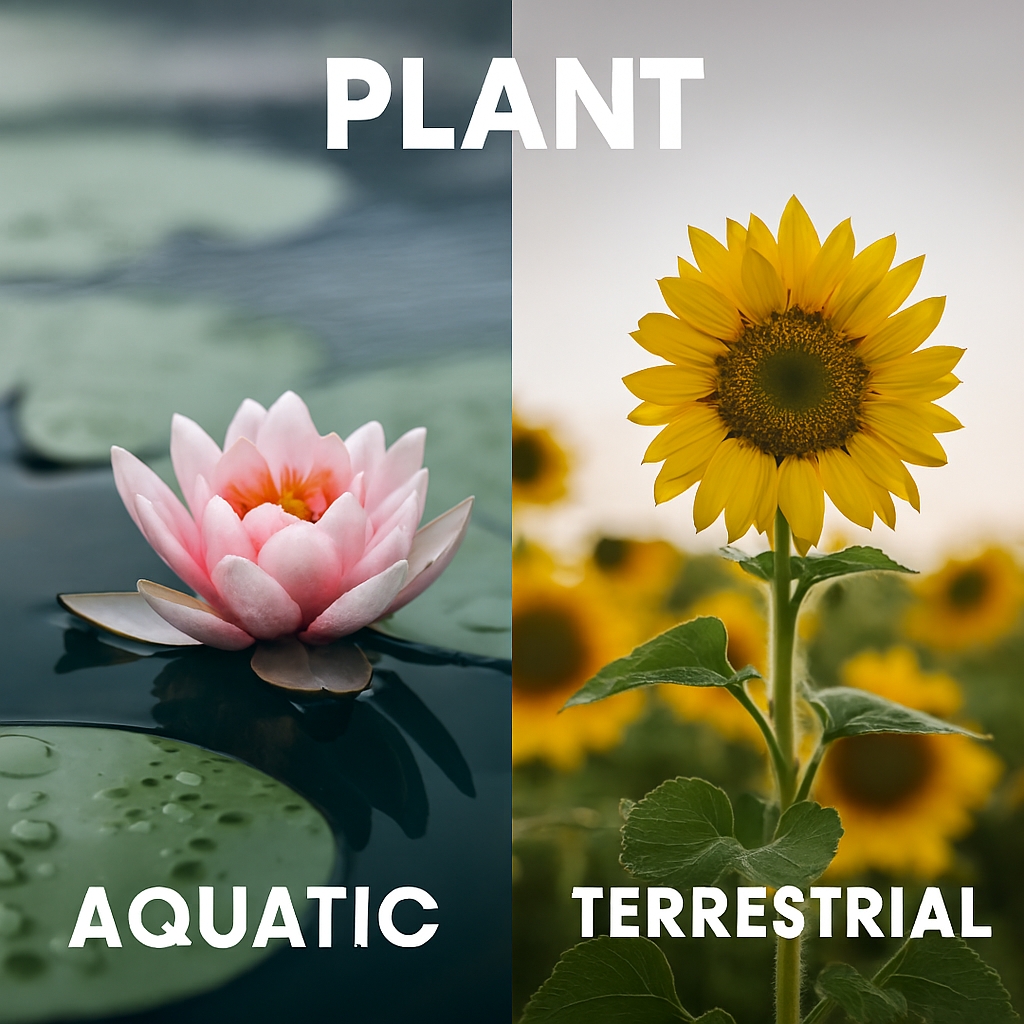We Should Change How We Look – Rethinking Our Connection
The environment is the foundation of human survival, yet for centuries it has been treated as an infinite resource, a backdrop to human progress rather than a living system with limits. Scientific evidence now shows that this perspective is dangerously flawed, as rising global temperatures, collapsing ecosystems, and widespread pollution reveal the consequences of unchecked exploitation. Climate change is accelerating due to greenhouse gas emissions from fossil fuels, deforestation, and industrial activity, while biodiversity loss threatens the stability of food systems and natural cycles.
Air pollution contributes to millions of premature deaths annually, and plastic waste has infiltrated oceans, soils, and even human bodies. These facts demonstrate that the environment is not separate from society but deeply intertwined with health, economics, and culture. Shifting our perspective requires moving from dominance to stewardship, recognizing that human prosperity depends on ecological resilience. This transformation is not only philosophical but practical, influencing policies, technologies, and everyday choices. By reframing our relationship with nature, we can unlock solutions that balance progress with sustainability.
The urgency of this change is underscored by extreme weather events, rising sea levels, and resource scarcity. Recognizing the environment as a living system rather than a resource bank is the first step toward securing a sustainable future.

Human Impact – Understanding The Scale
Human activity has reshaped landscapes, altered climates, and disrupted ecosystems in ways that are measurable and undeniable. Industrialization brought prosperity but also emissions that trap heat in the atmosphere, driving global warming. Agriculture expanded food supply yet cleared forests, drained wetlands, and degraded soils, reducing biodiversity and resilience. Urbanization created vibrant cities but consumed vast amounts of energy and water, straining local ecosystems.
These impacts are not abstract but quantifiable, with deforestation measured in millions of hectares lost annually and carbon emissions rising despite renewable energy growth. Plastic pollution has reached billions of tons in oceans, threatening marine life and entering food chains. Species extinction rates are accelerating, with scientists warning of a sixth mass extinction driven by human activity. Water scarcity now affects billions of people, undermining health and economic stability. The following table illustrates key global environmental pressures that highlight the scale of human impact.
| Impact Area | Current Trend | Consequence |
|---|---|---|
| Deforestation | Millions of hectares lost annually | Habitat destruction and biodiversity loss |
| Carbon Emissions | Rising despite renewable growth | Climate instability and global warming |
| Plastic Pollution | Billions of tons in oceans | Marine life decline and food chain contamination |
| Species Extinction | Accelerating rates | Collapse of ecosystems and reduced resilience |
| Water Scarcity | Affecting billions | Human health risk and economic disruption |
These figures show that human systems are inseparable from environmental health. Growth without sustainability is ultimately self-defeating, as the degradation of ecosystems undermines the very foundations of prosperity.
Economic Systems – Shifting Priorities
Economic systems have long prioritized short-term profit over long-term ecological balance, creating incentives that favor exploitation rather than stewardship. Fossil fuels powered industrial revolutions but now threaten planetary stability through emissions and pollution. Subsidies often support polluting industries instead of renewable innovation, locking economies into unsustainable pathways. Wasteful production models encourage disposable consumption, undermining resource efficiency and creating mountains of waste. To change how we look at the environment, we must rethink economic incentives and align prosperity with ecological resilience. Sustainable growth requires embedding environmental costs into market systems, ensuring that industries pay for the damage they cause. The following points outline critical shifts in economic priorities that can drive transformation.
- Transitioning from fossil fuels to renewable energy reduces emissions while creating new industries and jobs.
- Circular economies minimize waste by reusing and recycling materials, extending product lifecycles.
- Green finance channels investment into sustainable projects, rewarding innovation in clean technology.
- Carbon pricing internalizes environmental costs, making polluting activities less profitable.
- Eco-tourism demonstrates how conservation can generate revenue while protecting ecosystems.
- Sustainable agriculture balances productivity with soil and water health, ensuring long-term food security.
- Corporate responsibility integrates environmental metrics into success measures, shifting business priorities.
- Innovation in clean technology drives competitive advantage while reducing ecological footprints.
- Public policy can redirect subsidies toward renewable energy, accelerating the transition.
- Consumer demand increasingly favors sustainable brands, reshaping markets from the ground up.
These shifts illustrate how economies can evolve to support environmental stewardship. By embedding sustainability into financial and industrial structures, societies can prosper without exhausting natural capital.
Cultural Perspectives – Revaluing Nature
Culture shapes how societies perceive and interact with the environment, influencing behaviors as much as policies. In many traditions, nature is sacred, woven into rituals and stories that emphasize balance and respect. Modern consumer culture, however, often reduces nature to commodities, promoting endless consumption and disconnecting people from ecological limits. Advertising encourages disposable lifestyles, undermining values of conservation and stewardship.
Changing perspectives requires reviving cultural values that honor harmony with nature, recognizing that cultural narratives can inspire collective responsibility. Education plays a vital role, teaching children that the environment is integral to life rather than external to it. Media can amplify stories of stewardship, shifting public imagination toward sustainability. Communities can celebrate traditions that emphasize ecological balance, reinforcing cultural identity while protecting ecosystems. The following table highlights cultural approaches to environmental values and their outcomes.
| Cultural Approach | Example Practice | Environmental Outcome |
|---|---|---|
| Indigenous Wisdom | Sacred forests and rivers | Conservation of biodiversity and ecological resilience |
| Religious Teachings | Stewardship doctrines | Ethical responsibility and moral obligation |
| Modern Consumerism | Disposable goods | Resource depletion and waste accumulation |
| Eco-Culture | Minimalism and reuse | Reduced waste and sustainable lifestyles |
| Educational Reform | Environmental curricula | Awareness and action across generations |
These cultural frameworks demonstrate that values influence behavior as much as economic systems. By shifting cultural narratives, societies can inspire collective responsibility and revalue nature as a partner rather than a commodity.
Technology And Innovation – Driving Change
Technology has often been seen as a cause of environmental harm, yet it can also be a powerful solution when directed toward sustainability. Renewable energy technologies reduce reliance on fossil fuels, cutting emissions and stabilizing climates. Smart agriculture uses sensors and data to optimize water and fertilizer use, reducing waste and protecting soils. Electric vehicles lower emissions from transportation, improving urban air quality. Waste management innovations transform garbage into resources, reducing landfill pressure.
Digital platforms spread awareness and mobilize communities, connecting people to environmental causes. Artificial intelligence can optimize energy efficiency, reducing consumption across industries. Carbon capture technologies reduce industrial emissions, slowing climate change. Biodegradable materials replace plastics, reducing pollution in oceans and soils. Water purification technologies expand access to clean water, addressing global scarcity. The following points highlight areas where innovation drives ecological progress.
- Solar and wind power provide clean alternatives to coal and oil, reducing emissions.
- Battery storage enables renewable energy reliability, stabilizing grids.
- Precision farming reduces resource waste, protecting ecosystems.
- Electric mobility lowers urban pollution, improving health.
- Smart grids balance energy demand and supply, increasing efficiency.
- Biodegradable materials replace plastics, reducing pollution.
- Artificial intelligence optimizes energy use, cutting costs and emissions.
- Water purification technologies expand access to clean water, addressing scarcity.
- Carbon capture reduces industrial emissions, slowing climate change.
- Recycling innovations extend material lifecycles, reducing waste.
These innovations show that technology can align human progress with ecological resilience. By investing in sustainable solutions, societies can transform challenges into opportunities.

Policy And Governance – Building Frameworks
Governments play a central role in shaping environmental outcomes, determining how industries operate, how resources are managed, and how citizens engage with sustainability. Strong governance can enforce regulations that protect ecosystems, while weak governance allows exploitation to continue unchecked. International agreements demonstrate how collective action can address global challenges, while local policies show how communities can adapt solutions to specific contexts. Policies such as emission standards, renewable subsidies, and anti-poaching laws illustrate how governance can embed ecological responsibility into law and practice. Incentive programs encourage industries to adopt sustainable practices, while enforcement measures ensure compliance. The following table outlines governance approaches and their outcomes.
| Governance Approach | Example Policy | Environmental Impact |
|---|---|---|
| International Treaties | Paris Agreement | Global emission reduction goals and cooperation |
| National Regulation | Emission standards | Cleaner industries and reduced pollution |
| Local Initiatives | Urban green spaces | Improved air quality and community health |
| Incentive Programs | Renewable subsidies | Growth of clean energy and innovation |
| Enforcement Measures | Anti-poaching laws | Wildlife protection and biodiversity conservation |
Policy frameworks provide the structure for environmental change. Without governance, sustainability remains aspirational, but with strong frameworks, societies can embed ecological responsibility into law and practice.
Education And Awareness – Building Knowledge
Education is one of the most powerful tools for reshaping how societies perceive the environment, because knowledge transforms attitudes and behaviors in ways that policies alone cannot achieve. Schools that integrate environmental science into curricula help children understand the interconnectedness of ecosystems, climate, and human health, creating generations that value sustainability. Universities that emphasize research into renewable energy, conservation biology, and sustainable economics provide the intellectual foundation for innovation. Public awareness campaigns that highlight the dangers of pollution, deforestation, and climate change reach millions, shifting cultural norms toward responsibility.
Documentaries, books, and digital media amplify scientific findings, making complex issues accessible to broad audiences. Community workshops and local initiatives empower citizens to take action in their neighborhoods, reinforcing the idea that small changes accumulate into significant impacts. Education also combats misinformation, ensuring that decisions are based on evidence rather than myths. By embedding environmental literacy into everyday life, societies can cultivate resilience and adaptability. Knowledge is not just information but a catalyst for transformation, and awareness is the bridge between science and action.
Health And Wellbeing – Protecting Human Life
The environment directly influences human health, and degradation of ecosystems translates into risks for communities worldwide. Air pollution contributes to millions of premature deaths annually, with respiratory diseases and cardiovascular conditions linked to poor air quality. Contaminated water sources spread diseases such as cholera and dysentery, undermining public health systems. Climate change increases the frequency of heatwaves, which exacerbate conditions like dehydration and heatstroke, particularly among vulnerable populations.
Vector-borne diseases such as malaria and dengue expand into new regions as warming temperatures alter habitats. Food insecurity grows when soil degradation and water scarcity reduce agricultural productivity, threatening nutrition. Mental health is also affected, as communities facing environmental disasters experience trauma, anxiety, and displacement. Protecting the environment is therefore inseparable from protecting human life. The following table highlights key connections between environmental degradation and health outcomes.
| Environmental Issue | Health Consequence | Global Impact |
|---|---|---|
| Air Pollution | Respiratory and cardiovascular disease | Millions of premature deaths annually |
| Water Contamination | Cholera, dysentery, and other infections | Billions at risk worldwide |
| Climate Change | Heat-related illness and displacement | Rising vulnerability in all regions |
| Biodiversity Loss | Reduced food security and nutrition | Threats to global diets |
| Extreme Weather | Trauma and mental health challenges | Increased disaster-related stress |
These facts demonstrate that environmental stewardship is not only about protecting nature but also about safeguarding human wellbeing.

Innovation In Agriculture – Feeding The Future
Agriculture is both a driver of environmental change and a sector deeply affected by ecological shifts, making innovation essential for sustainability. Traditional farming practices often rely on heavy chemical inputs, leading to soil degradation, water pollution, and biodiversity loss. Modern solutions such as precision farming use sensors and data analytics to optimize fertilizer and water use, reducing waste while maintaining productivity. Agroforestry integrates trees into farming systems, enhancing biodiversity and improving soil health.
Vertical farming and hydroponics allow food production in urban areas, reducing land use and transportation emissions. Genetic research develops crops that are more resilient to droughts, pests, and diseases, ensuring food security in changing climates. Sustainable livestock practices reduce methane emissions while improving animal welfare. Organic farming emphasizes natural cycles, reducing reliance on synthetic chemicals. These innovations demonstrate that agriculture can evolve to meet human needs without exhausting natural resources. The following points highlight critical agricultural innovations.
- Precision farming reduces resource waste and increases efficiency.
- Agroforestry integrates biodiversity into farming landscapes.
- Vertical farming produces food in urban areas, reducing land use.
- Hydroponics conserves water while maintaining productivity.
- Genetic research develops resilient crop varieties.
- Sustainable livestock practices reduce methane emissions.
- Organic farming emphasizes natural cycles and soil health.
- Crop rotation maintains fertility and prevents disease spread.
- Integrated pest management reduces chemical use.
- Community-supported agriculture strengthens local food systems.
Agricultural innovation is therefore central to changing how we look at the environment, ensuring that food systems are resilient and sustainable.
Energy Transition – Powering Sustainability
Energy production is one of the largest contributors to environmental degradation, yet it also offers one of the greatest opportunities for transformation. Fossil fuels such as coal, oil, and gas release greenhouse gases that drive climate change, while renewable energy sources such as solar, wind, and hydropower provide clean alternatives. The transition to renewable energy reduces emissions, improves air quality, and creates new industries and jobs.
Battery storage technologies enable renewable energy reliability, stabilizing grids and reducing dependence on fossil fuels. Smart grids balance energy demand and supply, increasing efficiency and resilience. Hydrogen fuel offers potential for clean industrial processes and transportation. Energy efficiency measures reduce consumption across households and industries, lowering costs and emissions simultaneously. Policies that incentivize renewable adoption accelerate the transition, while consumer demand for clean energy reshapes markets. The following table highlights key aspects of the energy transition.
| Energy Source | Environmental Impact | Future Potential |
|---|---|---|
| Coal And Oil | High emissions and pollution | Declining relevance |
| Natural Gas | Lower emissions than coal but still polluting | Transitional role |
| Solar Power | Clean and abundant | Expanding rapidly |
| Wind Power | Clean and scalable | Growing globally |
| Hydropower | Renewable but ecosystem impacts | Stable contribution |
| Hydrogen Fuel | Clean potential | Emerging technology |
| Battery Storage | Enables renewable reliability | Critical for transition |
Energy transition is therefore a cornerstone of sustainability, reshaping economies and protecting ecosystems.
Global Cooperation – Shared Responsibility
Environmental challenges are global in nature, transcending borders and requiring collective action. Climate change affects all nations, with rising sea levels threatening coastal communities worldwide. Pollution spreads across oceans and atmospheres, making local actions insufficient without international cooperation. Biodiversity loss undermines global food systems, requiring shared strategies for conservation. International treaties such as the Paris Agreement demonstrate how nations can collaborate to reduce emissions and set collective goals.
Regional partnerships address specific challenges, such as deforestation in the Amazon or desertification in Africa. Global organizations provide frameworks for funding, research, and enforcement, ensuring that commitments translate into action. Cooperation also extends to knowledge sharing, as countries exchange technologies and practices that enhance sustainability. The following points highlight areas where global cooperation is essential.
- Climate agreements set collective emission reduction goals.
- Biodiversity treaties protect ecosystems across borders.
- Ocean conservation initiatives address pollution and overfishing.
- Regional partnerships tackle deforestation and desertification.
- Global funding supports sustainable development projects.
- Knowledge sharing accelerates innovation worldwide.
- International enforcement ensures compliance with agreements.
- Disaster response coordination strengthens resilience.
- Trade policies can promote sustainable practices.
- Cultural exchange fosters shared values of stewardship.
Global cooperation is therefore indispensable for changing how we look at the environment, ensuring that collective responsibility matches the scale of global challenges.
Conclusion – A Call To Transformation
Changing how we look at the environment is not optional but essential, as human impact, economic systems, cultural values, technology, and governance all reveal the need for a new perspective. The environment is not a resource to be consumed but a living system to be respected, and by shifting our mindset we can align prosperity with sustainability. This transformation requires collective effort across individuals, communities, businesses, and governments, recognizing that ecological resilience is the foundation of human survival. The urgency is clear, but the opportunity is equally powerful, as a new vision of stewardship can secure resilience for generations to come.
Join The Discussion
How do you believe societies can best shift their perspective on the environment?
#Environment #Sustainability #ClimateAction #GreenFuture #EcologicalBalance #InnovationForNature













Leave a Reply